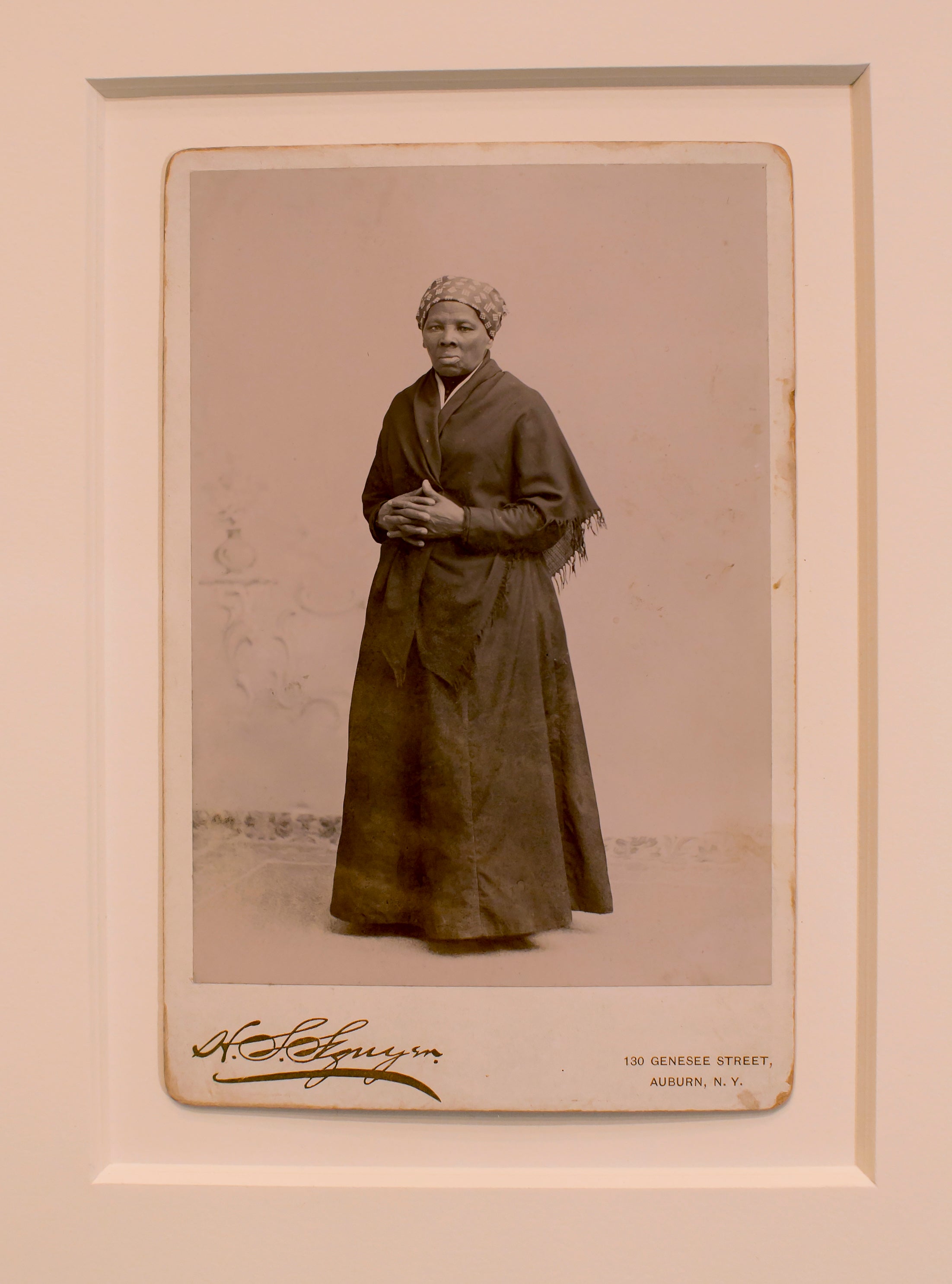
[brightcove:5351142976001 default]
Born on a Maryland plantation around 1822, Harriet Tubman knew well the harsh indignities of slavery. After three sisters were sold to the Deep South, and fearing her own sale, she began planning her second escape attempt.
Using the network of safe houses known as the Underground Railroad, and guided by the light of the North Star, she made her way to Delaware, then finally to Philadelphia, Pennsylvania, a free state. Later, the “conductor” repeatedly risked her own freedom to emancipate others.
Nearly two centuries later, the new Harriet Tubman Underground Railroad Visitor Center opened on Maryland’s Eastern Shore, where the famed abolitionist spent the first part of her life — nearly three decades of it — enslaved.
The center, which opened over the weekend, stands as a testament to a uniquely American and African American heroine: Araminta “Minty” Ross —best known as Harriet Tubman — who was a renowned liberator, as well as a Union spy/scout/nurse during the Civil War, suffragist and humanitarian.
“Harriet Tubman’s contributions to our state and nation transcend race, gender, nationality and religion, and her legacy continues to inspire others to this day,” said Maryland Governor Larry Hogan, who was part of ribbon cutting events with Tubman descendants, dignitaries, re-enactors and the public.
Subscribe to our daily newsletter for the latest in hair, beauty, style and celebrity news.
“The center…serves as an invitation to all people to learn more about Harriet Tubman and how her acts of determination, courage, and selflessness impacted our nation.”
The Tubman center is part of a state and national park complex, managed jointly by Maryland and federal officials. In 2013 (the 100th anniversary of her death), President Barack Obama established a national Tubman monument in Maryland.
That action helped pave the way for Congress to enact legislation for two national parks devoted to the freedom fighter: the Harriet Tubman Underground Railroad Historical Park in her birthplace, and a companion park in Auburn, New York, where she spent five decades and died in 1913 around age 90. Along the way, Tubman married twice and adopted a baby girl.
For decades, family, lawmakers, officials and community supporters have advocated for the parks. Valerie Ross-Manokey, Tubman’s great-great niece, is thrilled her aunt’s legacy is garnering widespread recognition.
“It’s about time,” said the octogenarian.
Indeed, the U.S. mint plans to feature Tubman’s likeness on a forthcoming $20 bill, and HBO has announced a coming biopic. State and local officials in Dorchester County, Maryland (where the center is located) hope to draw tourists from across the country and beyond.
“Visitors will discover a legacy garden and an outdoor recreational pavilion with a stone fireplace, which is perfect for family reunions,” said Connie Yingling, a spokesperson for the Maryland Office of Tourism.
Moreover, the 10,000 square foot center (designed by an African American architect) is a light-filled space with exhibitions, bronze cast figures, photographs, research space, and a museum store.
Immersive educational displays reveal Tubman’s life work, including a list with names of some of the individuals whom she emancipated.
Historian Kate Clifford Larson, Ph.D., author of Bound for the Promised Land: Harriet Tubman, Portrait of an American Hero said her research indicates Tubman returned to Maryland about 13 times over a decade to liberate her parents, brothers, relatives and others— approximately 70 people.
Larson, the park’s historical consultant, notes that the woman who’d be called “Moses” for leading her people to freedom also gave detailed instructions which allowed dozens more in Maryland to escape bondage.
Another exhibit — depicting Tubman in a boat stretching her hands towards people flailing in a body of water — showcases her valor during the Civil War.
Tubman led extensive scouting efforts for the Union Army and used that intelligence during an armed raid in June 1863 along the Combahee River in South Carolina.
Planned by Tubman with her eight male scouts under the command of Col. James Montgomery and his 2nd South Carolina Colored troops, Union forces landed and destroyed plantations along the riverbank, burning and flooding them.
“They notified the enslaved people that they could escape with the Union forces when they left,” said Beth Parnicza, a historian with the National Park Service. “More than 750 slaves gathered on the shore and rushed to get onto the gunboats.”
Larson said accounts reveal that those who left “carried their chickens, pigs, and even rice cooking in a pot as they fled the plantations.”
Afraid that the troops would depart without them, the men, women and children clung to the small boats.
“Tubman was called upon to reassure [everyone] that the boats wouldn’t leave. She sang to calm them until they could all be loaded onto the gunboats,” said Parnicza.
The Tubman national park in Maryland, adjacent to the Blackwater National Wildlife Refuge, will incorporate former plantations (some private and not publicly accessible) and an Underground Railroad stop.
The center will serve as the gateway to the Harriet Tubman Underground Railroad Byway, a self-guided 125 mile driving tour that winds through a landscape dotted with groves of trees, marshes, streams and wide open spaces. It includes 36 historically significant sites related to the Underground Railroad.
“To be in this place where Harriet was born, to walk the same lands she walked, is special,” said Angela Crenshaw, assistant manager of the Tubman state park.
“I’m always amazed at her life.”
